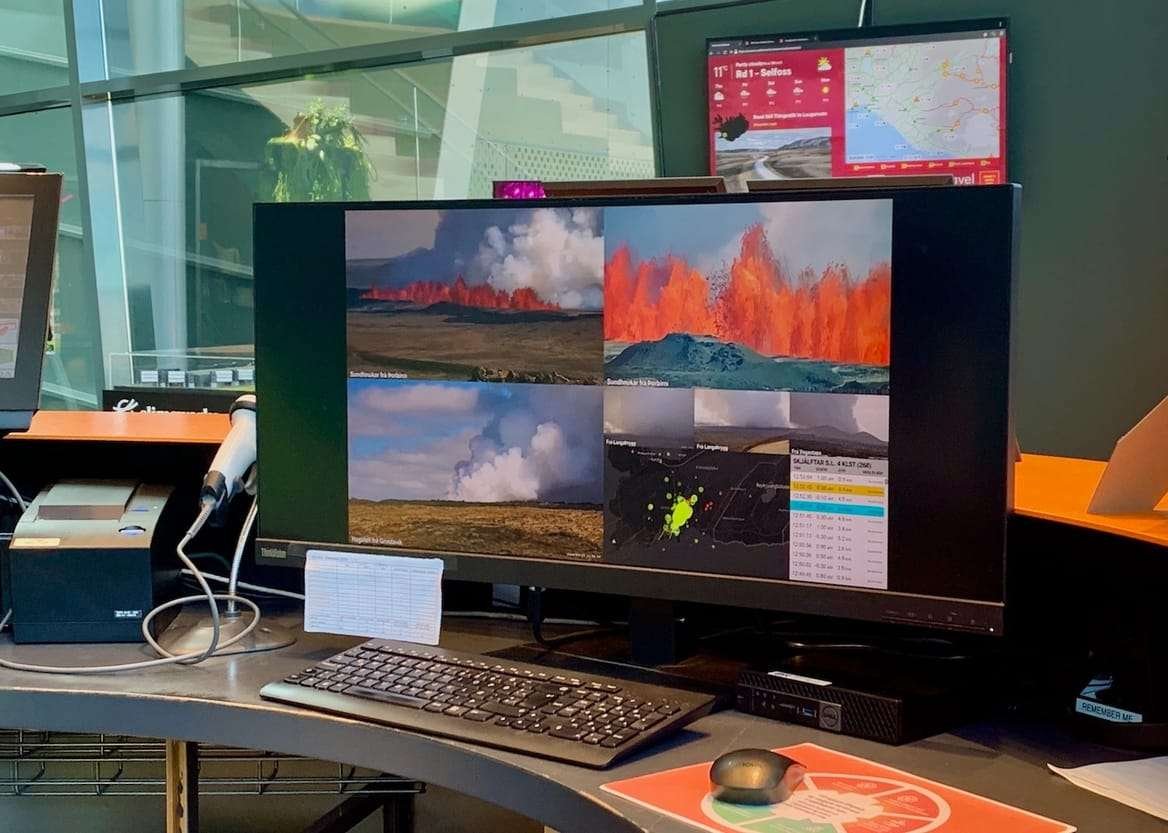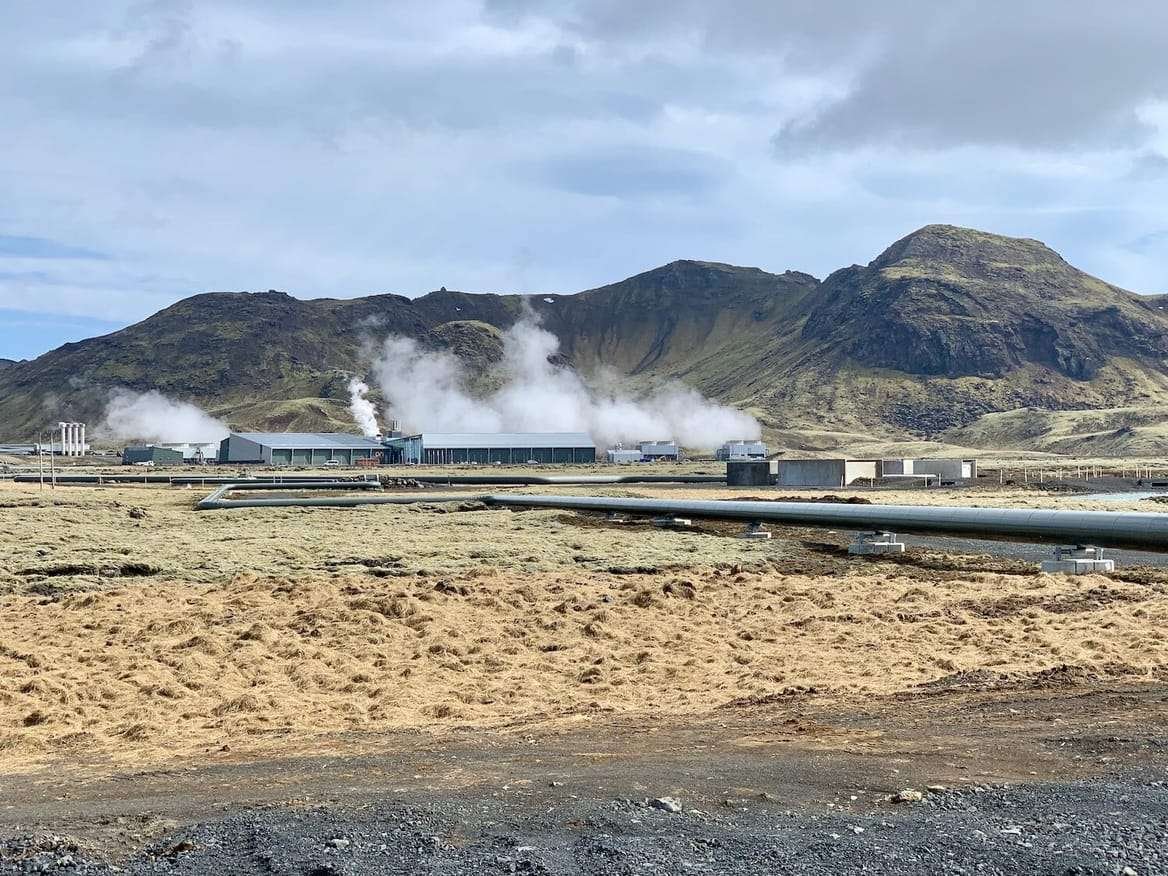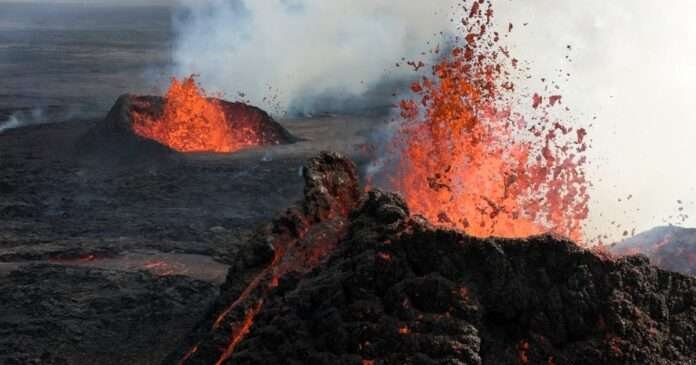

The first well, which KMT aims to drill in 2026, will mainly be geared toward studying and measuring magma itself. Scientists will place sensors directly into the magma and use the data to develop methods for detecting pools of liquid rock in other places. The goal is to find the hot pockets without the drills getting stuck in treacly magma; another focus is to get better at predicting volcanic activity.
“It’s not enough to be able to drill close to them and extract the energy,” Guðmundsson said during a conversation outside the geothermal conference. “We have to know where [the chambers] are in order to do so.”
In 2028, KMT plans to drill the second well close to where researchers accidentally struck magma in 2009 and will attempt to extract heat and potentially produce power. This time, however, scientists will use materials that they hope can withstand the highly corrosive environment — not just in Iceland, but in volcanic regions around the world.

Some 1 billion people globally live within roughly 60 miles of a volcano, representing a huge swath of the world’s potential energy users. “If we can create wells that can withstand conditions in Krafla, it will be very hard to find conditions that they won’t be able to withstand, because these are very extreme,” Guðmundsson said.
Harnessing hot, dry rocks
Another initiative in Iceland could unleash geothermal resources for the billions of us who don’t live near volcanoes.
Reykjavík Energy is planning to drill down into superhot conditions of around 750 degrees Fahrenheit. But unlike with most existing geothermal projects, the company won’t be looking to flow up hot water or supercritical fluids found naturally underground. Instead, the goal is to drill into dry rocks, then fracture the rocks and pump down water to create artificial reservoirs — an approach that could potentially be replicated in many other parts of the world.
That effort will be the third and latest drilling project under the IDDP umbrella. In late May, Reykjavík Energy shared its plans at a workshop inside Harpa, overlooking the placid Faxaflói Bay. The utility said it will collaborate with Clean Air Task Force, a U.S. advocacy group, and Transition Labs, an Icelandic nongovernmental organization, to carry out the $15 million to $20 million research project. Drilling is slated to begin around 2027 or 2028, at a site near the Nesjavellir geothermal power plant.
Fracturing rocks to produce geothermal energy is an emerging but proven concept. In the U.S., the startup Fervo Energy is using horizontal drilling techniques pioneered by the oil and gas industry to build the nation’s first commercial “enhanced geothermal systems” in Nevada and Utah. But Fervo isn’t drilling into superhot rock conditions, at least not yet.
“There are a lot of knowledge gaps, because no one’s done this before,” said Trenton Cladouhos, vice president of geothermal resource development for Quaise Energy. The Cambridge, Massachusetts–based startup is developing high-frequency beams that melt and vaporize rocks, in hopes of drilling into ultradeep, superhot formations.
At the workshop, Cladouhos presented new computer modeling that suggests a superhot system can deliver five to 10 times more power than is produced today from enhanced geothermal systems for up to two decades. It also indicated that superhot rocks will behave differently, possibly creating a large “cloud” of tiny fractures instead of a few large fractures, as at lower-temperature conditions.
“The model doesn’t actually give a recipe to how to create fractures at these [extreme] temperatures,” Cladouhos said later by phone. “So that’s really what we want to do in the field, is figure out that recipe.” By early next year, Quaise plans to conduct its first field test by boring a 330-foot-deep hole at a quarry in Texas using its novel drilling technology.

Meanwhile, in Iceland, Reykjavík Energy is planning to begin a smaller research effort later this year, Pálsdóttir, the utility’s head of resource innovation, explained on a call in mid-July.
In previous deep-drilling projects, the ultrahigh temperatures caused well casings to expand and crack from the thermal stress. The company plans to test new flexible “couplings” connecting pipe segments in a typical geothermal well in the coming months to see if they could provide a fix. Researchers are also working to develop more corrosion-resistant equipment that can handle the acidic, mineral-rich fluids that flow through these systems.
Pálsdóttir said she doesn’t expect that drilling into the ground itself will induce earthquakes. But the process of reinjecting water and fluid into the ground after energy is extracted can sometimes induce seismicity, which happened near one of Reykjavík Energy’s geothermal power plants around 2006. The company has since developed protocols for limiting and avoiding earthquakes, and for distinguishing human-caused seismicity from Iceland’s natural rumblings, she said
A U.S.-based startup is pursuing a similar drilling project in Oregon. Mazama Energy plans to demonstrate a superhot enhanced geothermal system on the western flank of the Newberry Volcano, which has been described as “the biggest untapped geothermal resource in North America.” Earlier this year, the U.S. Department of Energy selected Mazama’s pilot project and two others to receive up to $60 million from the Geothermal Technologies Office.
As the projects get underway in Iceland and Oregon, Clean Air Task Force will be working to help companies share data and findings so that the broader industry “can learn from each other and do it better, faster, cheaper,” said Terra Rogers, who leads the organization’s superhot rock energy program.
“Every effort to demonstrate how ubiquitous and abundant this resource is is a step in the right direction,” she said, noting that geothermal “could really have an impact and timeline that’s meaningful for the climate.”
Rogers and other superhot proponents claim these projects aren’t moonshots. KMT’s Guðmundsson, speaking at the concert hall in Reykjavík, said these efforts aren’t as scientifically ambitious as, say, space exploration or nuclear fusion, two highly uncertain fields that have no shortage of public and private funding.
“Why are we not putting the same amount of money into researching the earth and trying to harness this extreme energy?” he said. “We have abundant green energy beneath our feet. We just have to create methods to reach that energy.”
Note: Canary Media traveled to Iceland as part of a paid press trip organized by Green by Iceland, a public-private partnership supporting Iceland’s business sector.
Source link
#Magma #hot #rocks #Iceland #seeks #future #geothermal #energy








